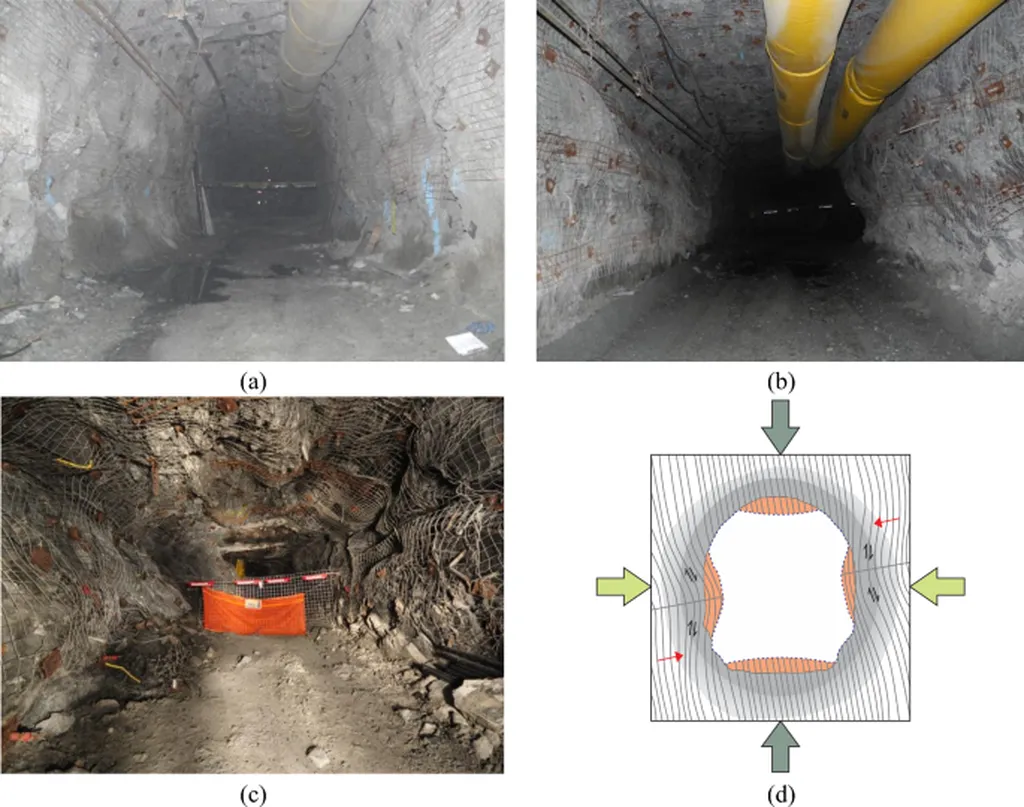In the realm of tunnel engineering, predicting and mitigating the risks associated with tunnel squeezing is a critical challenge, particularly in weak rock masses. A recent study, led by Evren Posluk of the Turkish State Railways (TCDD), has introduced a novel empirical equation that promises to revolutionize the way engineers approach this problem. Published in the ‘Advances in Civil Engineering’ (or ‘İnşaat Mühendisliği İleri Çalışmaları’ in Turkish), this research could significantly impact the energy sector, where tunnel construction is a cornerstone of infrastructure development.
Tunnel squeezing, a phenomenon where the tunnel walls and roof deform excessively due to high in-situ stresses and weak rock conditions, poses substantial risks to both occupational safety and project costs. Accurate prediction of this phenomenon is crucial for effective tunnel design and construction management. Posluk’s study focuses on tunnels excavated in schists with high tectonic effects and low overburden thickness, a scenario often encountered in energy sector projects.
The research leverages machine learning techniques to derive an empirical equation that simplifies the prediction process. “We used the polynomial regression curvefit method, one of the machine learning methods, to obtain the empirical equation,” Posluk explains. The equation incorporates key parameters such as rock mass quality (Q), maximum in-situ stress (σmax), and support stiffness (Kmax), providing a fast and straightforward calculation tool.
The study’s findings are promising, with the empirical equation achieving over 80% accuracy in predicting tunnel squeezing conditions. This level of precision is a significant advancement, particularly for tunnels with low overburden thickness and high tectonic effects. “The proposed empirical equation offers a new approach in predicting squeezing in tunnels where the overburden thickness and rock quality are low and tectonic effects are high,” Posluk notes.
The implications for the energy sector are substantial. Accurate prediction of tunnel squeezing can lead to more efficient project planning, reduced construction costs, and enhanced safety measures. As the energy sector continues to expand its infrastructure, particularly in challenging geological conditions, tools like Posluk’s empirical equation become invaluable.
Looking ahead, the research team recommends expanding the scope of the empirical equation to different tunnel conditions. This could further broaden its applicability and utility in the field. As Posluk’s work demonstrates, the intersection of traditional engineering knowledge and advanced machine learning techniques holds great promise for the future of tunnel engineering.
In the ever-evolving landscape of construction and energy, innovations like this are not just welcome—they’re essential. By providing a more accurate and efficient means of predicting tunnel squeezing, Posluk’s research is set to make a lasting impact on the industry.

